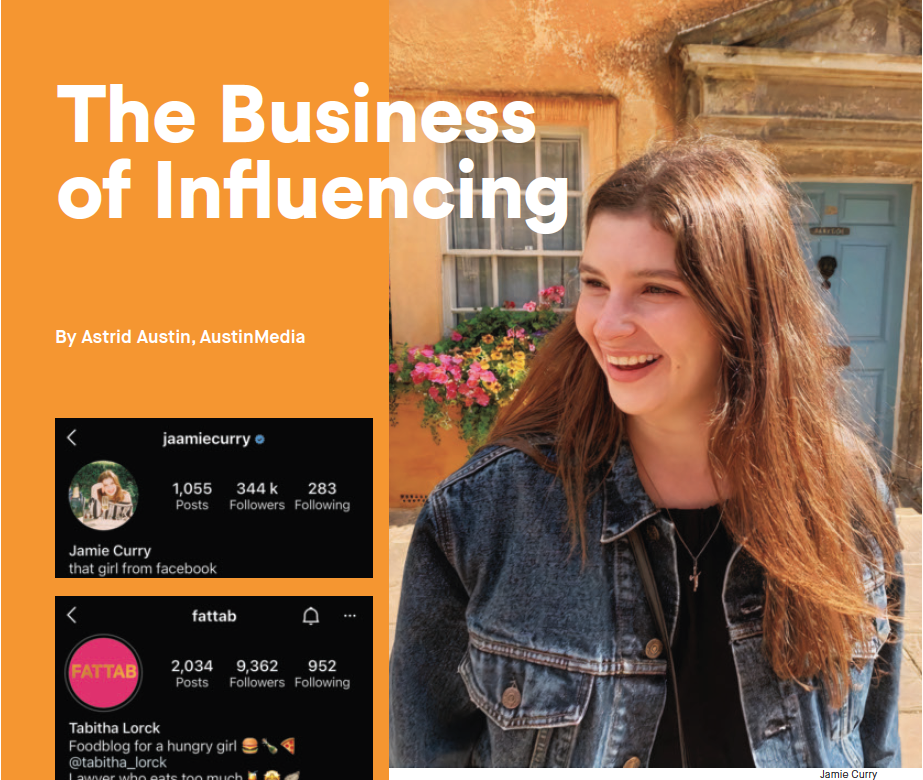Being paid to give your opinion on anything and everything sounds like a dream job, and it is for a number of Hawke’s Bay and New Zealand influencers.
In the age of social media, the role of influencers has become pivotal in reaching targeted and general audiences.
What do these influencers have that you and I don’t? Followers.
Followers on Instagram. Followers on Twitter. Followers on Facebook. Followers on YouTube. The greater your following, the bigger your potential pay cheque.
Jamie Curry went from being a bored teenager in her bedroom in Taradale to one of New Zealand’s highest-paid and most followed influencers, commanding the attention of a staggering 8.2 million followers on Facebook, 1.25 million followers on YouTube, 342,000 followers on Instagram, and 280,000 followers on Twitter under the profile Jamie’s World.
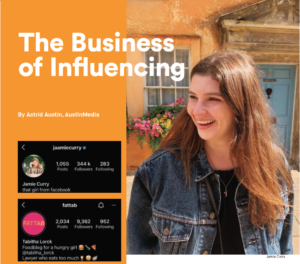
At her peak, she had a 25 million-strong legion of young social media followers. Such is her celebrity status, she even has an agent and commands six figures.
But when Jamie started out back in 2012, it was almost unheard of for a non-traditional celebrity to be able to make money off social media, let alone to have a manager.
“It was an accident,” says the now 25-year-old. “When I started, I didn’t even know you could get famous or whatever on the Internet.”
Her amusing slice-of-life-videos came about after her friends — who were used to her sharing meme photos within the group — suggested she create content for the wider public.
That decision, she says, “changed my life”.
“I went from being 15 at school and no one knowing who I was to not being able to go anywhere without getting recognised — not so much now but when I was 18, 19 and 20 years old.
“So that was kind of weird. In the space of four years, I was living a completely different life. I’d never really been overseas and now I’ve been everywhere.”
And she basically has; even ticking off Antarctica where she filmed a four-part series, Jamie’s World on Ice, in 2017.
“So yeah, my life did change quite a bit from posting memes for my friends to posting videos to people all around the world.”
As her following grew so did the offers from brands wanting her to advertise their products or travel to events worldwide.
“When it was going up a million each month, it was like, ‘Ah, okay, I have quite a big following here’. So then that’s when I went and got an agent.”
But they weren’t interested at first. “It was quite new at the time and they were sort of like ‘No, we manage actors and singers. What are we going to do with you?’, which is quite funny because that’s just the thing they do now,” she says.
Despite her success, Jamie doesn’t believe she is an influencer. Simply, she is someone who “got lucky and got a following”.
Called a ‘creator’ back in the day, she found her niche in sharing her “boring life”, just like that of many of her followers.
“I was at school and I just did normal things that were relatable to people at that age and at that time.”
And she wants to continue down that path. “I’d rather make content, really, really good content.”
Social media trainer, coach and consultant Jodine McIntyre, whose trading name is Social Smarty, says a social media influencer is simply someone who has an audience on social media (Facebook, Instagram, Twitter, and the like) that they can influence the opinion, choice or behaviour of.
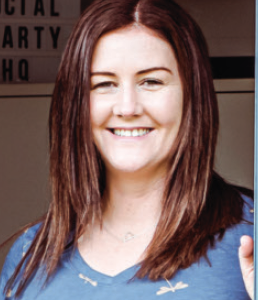
And although one may assume someone has to have hundreds of thousands of followers to be eligible for such a title, Jodine says there is no minimum audience size required.
“In fact, it’s often the influencers with smaller audiences, referred to as nano or micro-influencers, that have the most influence on their audience.”
There are a number of influencers — whether they identify with the term or not — in Hawke’s Bay, but the key to creating a following is authenticity and consistency.
“The best way to approach social media, particularly if you would like to become
an influencer, is to focus on creating a human-to-human connection. Imagine you’re connecting with one individual person.
“Through your content share with them your knowledge, your thoughts, your opinions and glimpses into your daily life.
“Remember that not everyone will connect with you but by showing up authentically and consistently, those who enjoy your content will become connected to you. They will look forward to seeing you in their newsfeed. Those who don’t enjoy your content can scroll on by.”
Building an audience is much easier when you have a clear niche; for example, one may share content around exercise, cooking or travel.
“Many influencers share content multiple times per day. They also treat their followers as if they are personal friends, sharing behind the scenes of their day, vulnerable moments or exciting events, in the same way you might share with a best friend.”
Take Hawke’s Bay-raised, Auckland-based solicitor Tabitha Lorck, who under her profile @fattab has found more than 9,000 followers and a whole lot more perks as an Instagram food influencer.
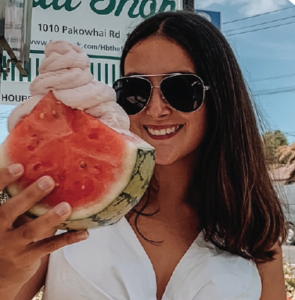
A self-described foodie, Tabitha started out documenting her food experience as a university student almost six years ago and now considers it a ‘side hustle’, with food brands and eateries approaching her to taste and share their products.
At one point, she even boasted a website that she would use to showcase the best food deals on offer. “It’s not like I planned to have this big Instagram profile, it just kind of happened,” Tabitha says.
“It kind of took off from there. I guess people who followed me had the same kind of interest — looking for a cheap eat that wasn’t terrible hall food — and that’s where it all started.”
She believes her success has come out of remaining authentic and relatable, even as her following and reach has grown.
And as she has evolved in life, so too has her Instagram content. No longer just focussed on good deals, Tabitha’s account has grown into an everyday review of food.
Tabitha says businesses are now realising the power social media harnesses, and are using it more and more.
A lot of the time, she finds businesses and brands contact her when they’re new or are looking for feedback and exposure. In the age of COVID-19 and ever-changing restrictions, influencers have become a viable way of generating income.
And as an influencer of sorts, Tabitha says being able to help and support small businesses during this time “is a definite perk”.
This year alone, the food influencer says she has done the most paid collaborations since she started the account. “And even then, it’s only a handful.”
Although, she mostly does unpaid collaborations, where no money changes hands, only food products. “I get about three or four packages a week arrive at work, so there definitely are perks in it for me.”
But don’t be fooled into thinking it doesn’t come at a cost. The food influencer estimates she spends at least a couple of hours each day behind the scenes.
While she thought she would have stopped it by now, the lure of the different opportunities available has always brought her back to her ‘why?’.
“Don’t get me wrong, if somebody offered to pay me to travel the world and eat food for free, I’d jump at it! But realistically, I’ll just keep it going until it fizzles out, and it can remain a side hustle.
“I don’t think I will turn it into anything more unless I had to; say, if I lost my job and had to improvise, then maybe I’d look at turning Fattab into something more.”
But like Jamie, Tabitha says social media is changing all the time. Gone are the days when weekly uploads were enough and there was a much smaller number of
influencers on an equally small network of social media apps.
“If you don’t keep up with it, I think eventually you will get left behind. I’m not on Tik Tok and I don’t really do the reels on Instagram … so I’m not too sure where that leaves me!”
Jamie tends to agree but believes there are more opportunities available nowadays as people have come to understand what being an influencer means and are more accepting of people having the title.
“It’s a lot more saturated and you’ve got to really find a niche in a market, but I think there’s definitely room for this influencer thing for years to come.”
She believes influencers will become the next “big celebrity”.
“I mean, I think the idea of these big out-of-touch, out-of-reach celebrities is kind of dying out and people prefer people they can relate to. They like to see them as normal people.”
When the pandemic hit early last year, Jodine says they saw record online traffic as people around the world craved human connection without the ability to connect in person.
“Brands who are not using social media marketing missed out on that traffic surge and the ability to connect instantly with a massive global audience.”
She says almost 3.8 million Kiwis are active on Facebook at least once a month. For Hawke’s Bay, that number is around 110,000.
“This is a huge opportunity for brands to meet their existing and potential customers where they are already spending a tonne of time.”
Wellness blogger Libby Rainger, who hails from the Bay, turned to Instagram soon after starting her business The Wellness Platform in 2017.
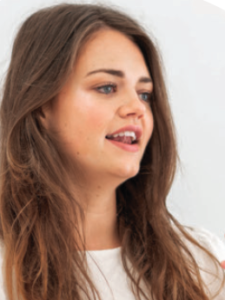
“I got into the space by accident. I know that most businesses are on Instagram these days and for my offerings (coaching and corporate workshops), it seemed like the best way to get work was to promote what I was offering on Instagram.”
She also has a podcast and blog, and has a following of more than 2,000 people. The journey has been “very organic” and her focus has never been about being an influencer but rather about growing her business.
“I post tips, testimonials and examples of what I teach, and now I find that almost all of my work comes directly from followers on Instagram.”
Her success has come from posting the behind the scenes of her life.
“When I started, I didn’t post much about me, the person behind the business. It would be lots of text quotes or testimonials. When I decided to talk about and post whatever I wanted to, including snippets of my own life, the followers started to flow,” she says.
A goal of spreading “as much froth” as he possibly can has amassed Havelock North man Jack Jensen a 90,000 strong following across social media platforms.
The Kiwi action sports enthusiast grew his business MSFT Productions from an initial passion for capturing the missions he and his group of mates, The MISFITS, got up to on land and in the water back in 2013.
“Developing my editing and production skills and knowing that all the boys love to send it allowed me to create epic ‘sendy’ moments and turn them into pieces of content for fellow ‘frothers’ to enjoy,” Jack says.
In less than three years, the 25-year-old has been able to turn his passion into a living through his authentic way of living life both on and offline. That, combined with a knack for content creation.
Not only does the group do videography and photography through MSFT, but they now also collaborate with other brands and businesses nationwide, sell clothing all over Australasia, and host extreme sports and live music events.
“It’s been pretty crazy to see what it’s become,” he says. Yet the self-confessed frother believes it’s just the beginning of what he pictures MSFT being, and the scale of what they’re going to be in the future.
“But the whole picture and the whole meaning behind it is so much bigger than just straight social media; it’s a platform from which we can directly inspire people to live. By a click of a button or a scroll, you can see what we’re up to and it pumps people up to go and do it themselves.”
Jack’s no-holds-barred approach to life has also seen him use his platform to shine an important light on mental health, more so than before with the recent loss of one of his good mates.
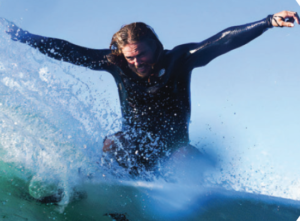
Called #sparkthatchat, the campaign aims to spark those hard conversations and raise money to further support the work of the Mental Health Foundation.
“Being able to utilise the platform to help people is my main objective, and to just get people amped to really live and get back to living in the present.”
While big followers can mean big money, Jack says he will never “sell out” if he believes the brand doesn’t align with MSFT’s purpose.
“The brands I’m working with have been awesome and truly align with what we’re about. It’s really cool that now it’s got to the point and the scale of getting paid to do exactly what I want to do, and that’s to send it as an extreme sports athlete and create rad content and work with just epic people wanting to do cool stuff while they’re here on this planet.”
Where in the past there was an expectation by brands that social media influencers would promote a brand in exchange for free products or services, Jodine says that is changing.
“Influencers are now commanding payment that reflects the impact their endorsement can have on a brand as well as the time and resources it takes to create content.”
The Social Club is an Auckland-based agency that connects brands with New Zealand and Australian influencers. Based on data from over 3,000 campaigns, they would expect someone with an audience of 10,000 people to be paid NZ$360–400 per social media post.
Take the Kardashians, who have famously hit the headlines for charging hundreds of thousands of dollars per Instagram post.
The challenge, which the New Zealand Advertising Standards Authority (ASA) aimed to address through their guidance on influencer advertising content released last year, is for consumers to be able to identify what content is actually an advertisement.
Jodine says the guidelines give greater transparency to consumers so that they can make an informed decision about the products or services being advertised.
Content that the ASA deems as advertising needs to be clearly labelled as such for consumers and is the collective responsibility of not just the influencers but also the advertisers and any agency involved.
Jamie understands the reasoning behind the move and believes there is more of an acceptance from consumers that influencers get paid. But that doesn’t mean effort isn’t required.
“In 2013 and 2014, people really didn’t like that I made money off things,” Jamie recalls. “And it was strange because it was like, I’m giving you so many hours of content and entertainment per week, why is it so horrible that I get paid? It was really weird.”
Recently, she did work with Coca-Cola. “We tried to make it as entertaining and authentic as possible. I believe when you are being paid to advertise a product, you should still put effort into it and still make it entertaining for your audience.”
And if she doesn’t like a product or align with their messaging, she won’t accept it. Why? “Because that’s dumb,” she says.
“I think making it authentic while still entertaining is important, because that’s what people follow me for, to be entertained. So why would I do a boring little ad?”
Having lived the best part of 10 years in the public eye, Jamie now posts less frequently, having just come back from a year in the UK with her fiancé, most of which was spent in lockdown.
There’s no doubt social media has come with great reward for Jamie. Although her life and the platform that gave her so much has changed over the years, her heart will never leave her “first love”. Nor will her quirky sense of humour she is famed for.
“I’m not doing too much right now, I’m just kind of figuring out what I want to do with the space that I have.”

